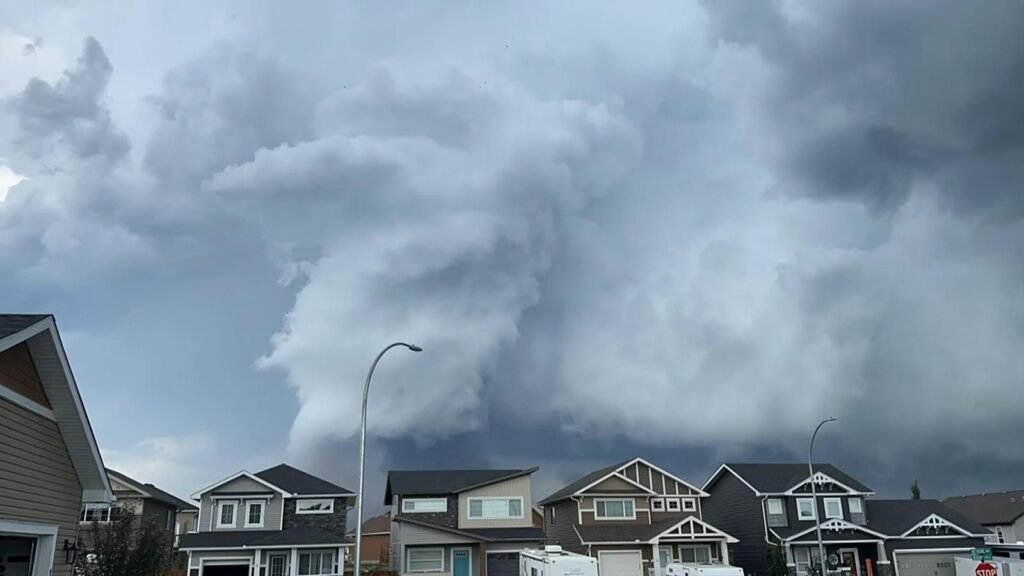
When a tornado struck Barrhaven, a suburb of Ottawa, on July 13 with little to no notice, more than 125
homes were damaged. In the wake of the incident, several storm specialists claim this is evidence that
warning systems still need to be improved.
At the moment, when bad weather is predicted for the nation, Environment and Climate Change Canada
notifies the public via its website, the WeatherCAN app, the Weatherradio network, and social media
channels. Alerts are also amplified by private and public broadcasters like the Weather Network via its
own mobile app and TV programming.
Additionally, when severe weather is deemed a “threat to life,” the notifications are aired on TV, radio,
and wireless devices through the nation’s Alert Ready system, with provinces and territories being in
charge of broadcasting those signals through their respective alerting systems.

Barrhaven, a South Ottawa suburb, was struck by a tornado on July 13th. More than 1500 households lost electricity as a result of the area’s severe devastation, which also affected about 125 homes.
But according to the Northern Tornadoes Project, which tries to evaluate Canada’s actual climatology in
order to enhance the nation’s tornado warning models and make dwellings more tornado-resistant, the
system is only as good as the data provided to it.
Tornadoes make things exceedingly challenging. The experts continued, “Tornadoes are extremely
difficult to predict, and typically the target lead time is only 10 minutes.
“We really need to improve our ability to use radar and other tools to look at a thunderstorm and be able
to predict whether it will produce a tornado or not and give us more time to react,” said the researcher.
Tornado sirens, which are frequently used in tornado-prone areas of the U.S., are a similar alarm system
that is used south of the border in the U.S., but they are less popular in Canada.
While each jurisdiction maintains their sirens in terms of testing and use, some not even utilizing them at
all in a year, many are consistent in terms of the loudness, blasting at roughly 120-130 dB from 100 feet
or 70 decibels from one mile away.
Despite the fact that the sirens are not intended to be heard indoors, authorities claim they are
nevertheless useful, and homeowners have validated this claim with their own reviews of the system.
Many people will cite it as proof that this is genuine, despite the fact that we don’t like it. People pay
attention because there is a threat present and because the sirens are frightening and uncommon to
hear.
Residents frequently inquire as to why a warning siren did not sound despite poor weather, they said,
adding that people also notice when one does not.
The use of the sirens for so many years has contributed to their practically embedded status in society.
“We’ve been using these sirens for decades, so it’s just kind of a normal thing that our communities are
used to hearing and understanding what that means,” the officials claimed.
But there are problems with the systems as well.

Especially if a city never needs to use the alarm owing to few or no tornadoes in a single year, officials
claim that sirens can be expensive to maintain and raise questions about the cost-to-benefit ratio.
According to officials, 34 sirens would be required in the town of Castle Rock, Colorado, at a cost of
US$30,000, or US$1.02 million, with each siren covering an estimated one mile. This sum excludes
yearly maintenance and charges. The sum is estimated to be around $39,000 CAD in other areas, such
as Dallas, Texas, and Raleigh, North Carolina.
The Northern Tornadoes Project provides Environment and Climate Change Canada (ECCC) with
performance reports on the effectiveness of its tornado warnings.
The study examines the likelihood that a tornado warning would be issued, whether an alert would have
been sent at least 10 minutes before to the event, and whether tornado watches would have been issued
prior to successful warnings, which would have happened 80% of the time.







